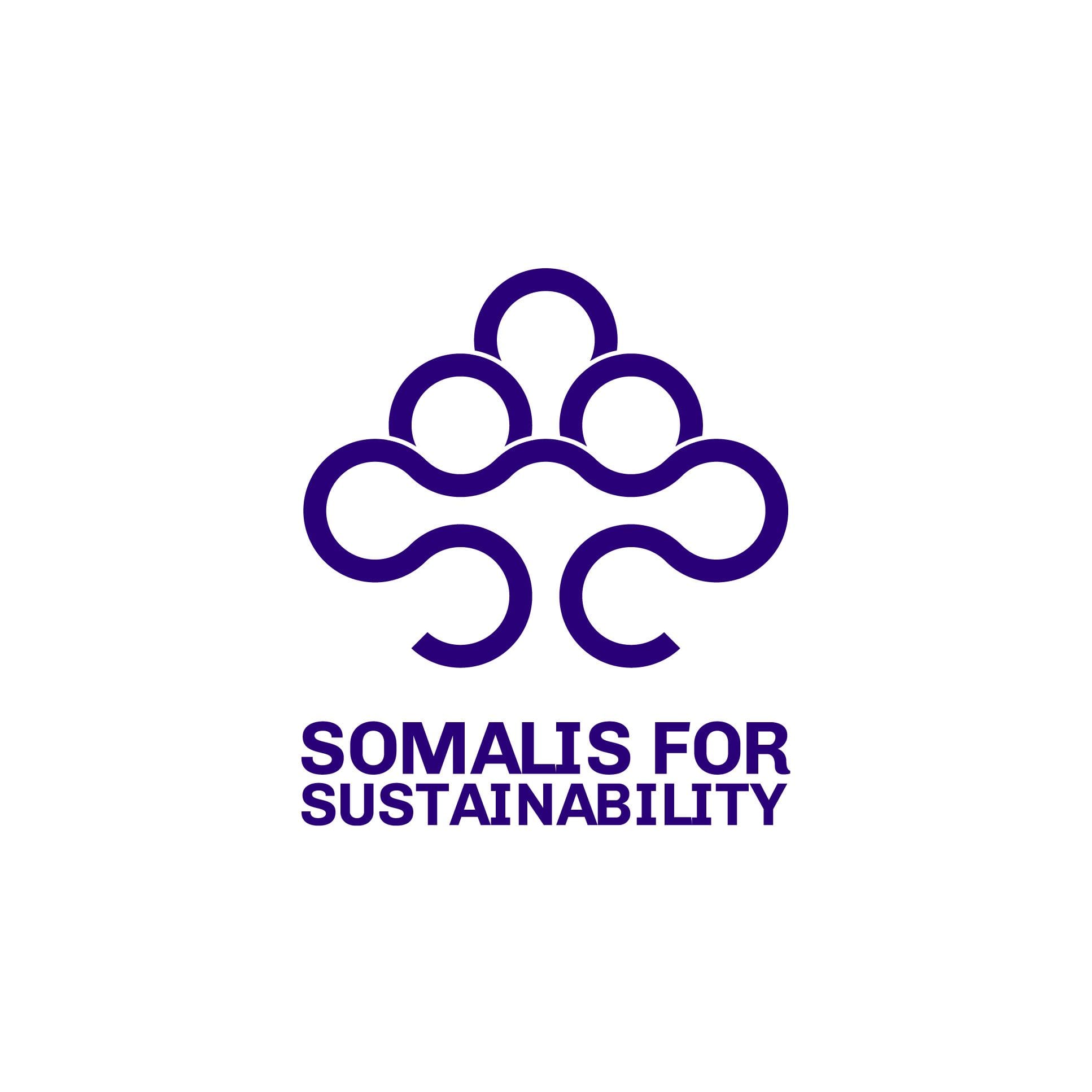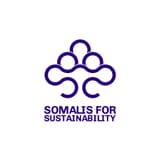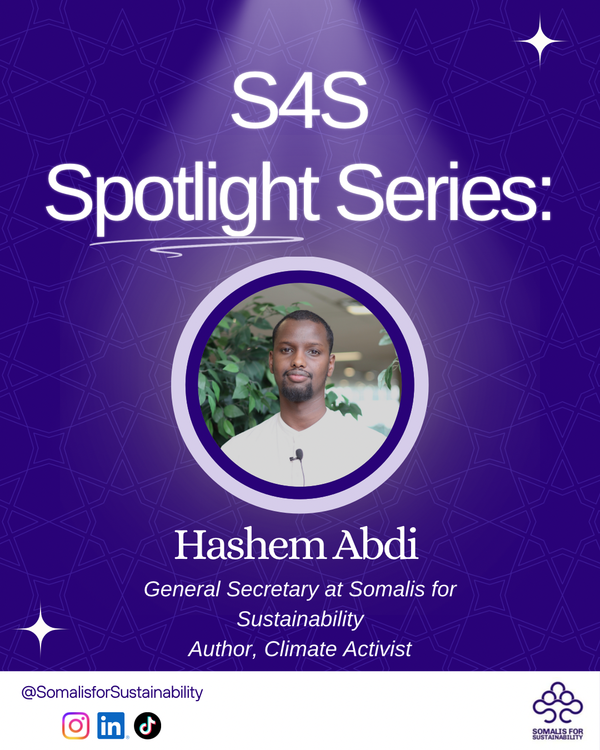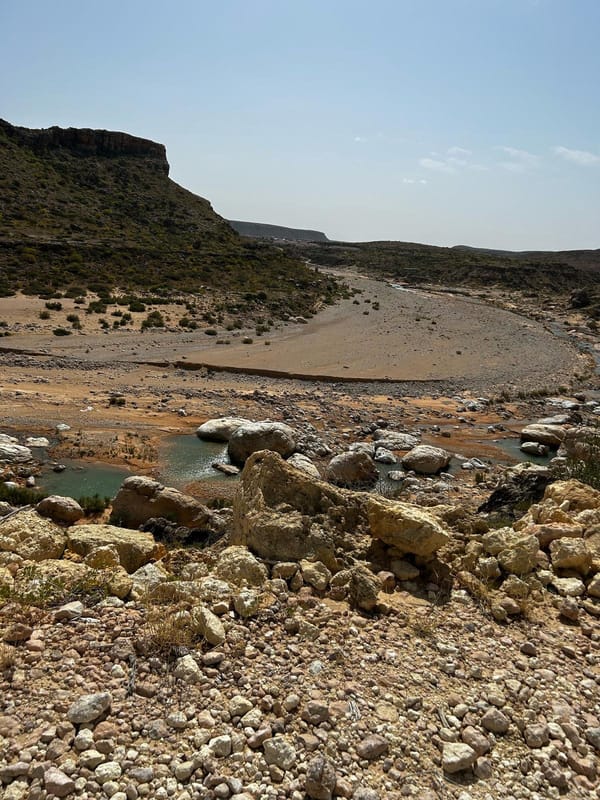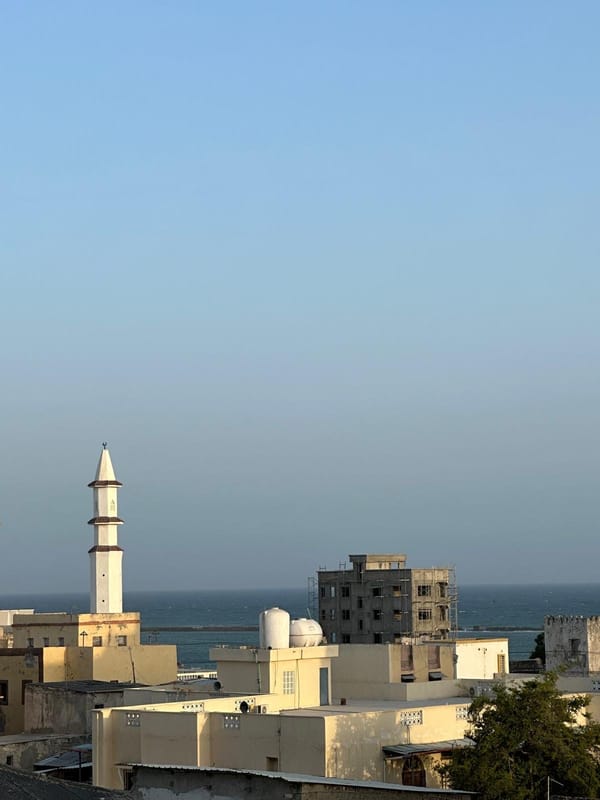Maydi Newsletter: April 2025
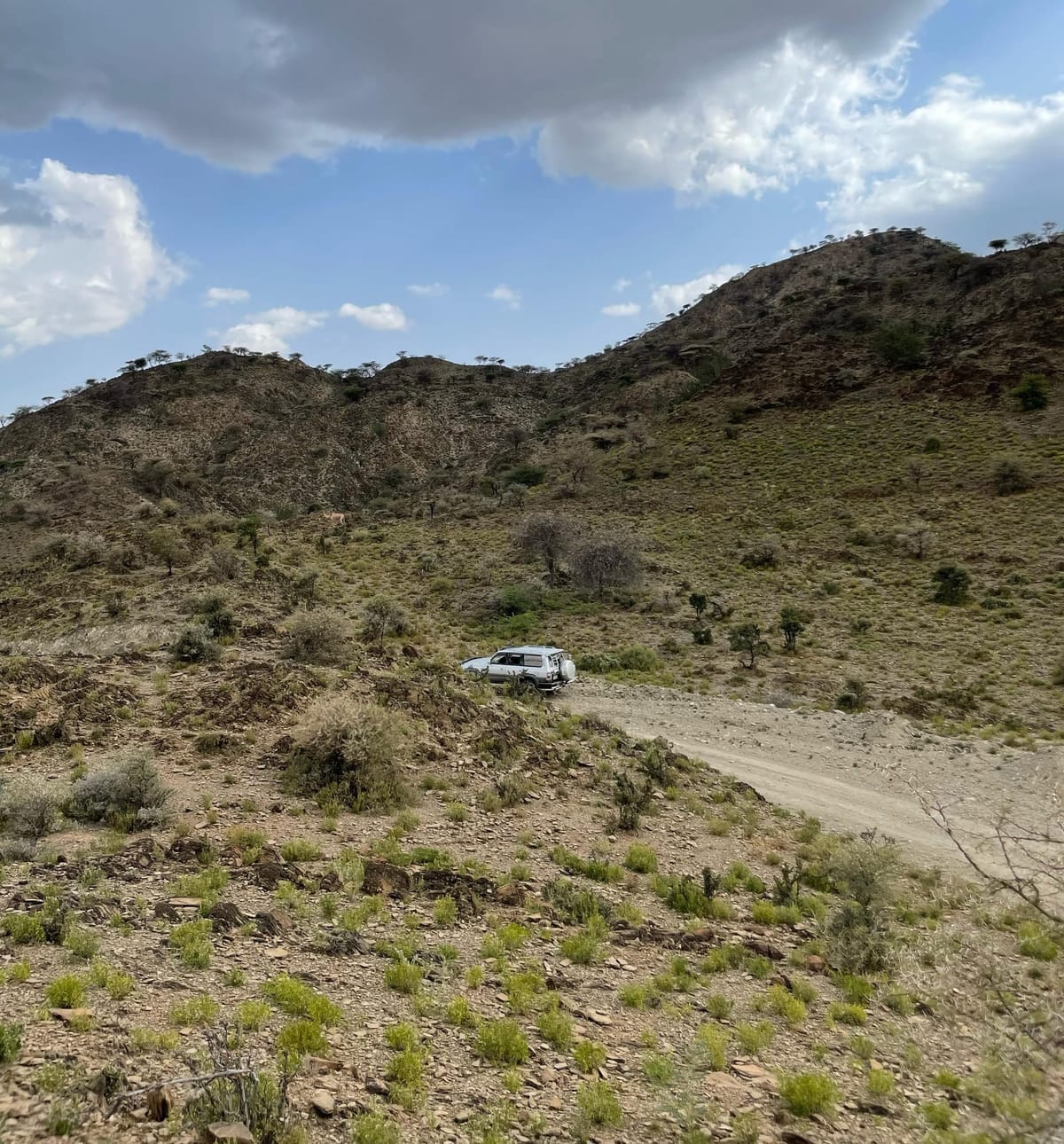
Hi everyone!
Welcome to this month's edition of the Maydi Newsletter! We're back after a short break in March. In this issue, we share our first-ever contributed article from the SEG Forum on early flood warning systems, along with highlights from our event in Sweden and our recent online webinar on carbon credits.
We have two events to share that are happening next month, so be sure to read to the end to find out more.
Until then, thank you—as always—for reading!
🗣 S4S News
S4S on tour in Sweden 🇸🇪
On Saturday, February 22nd, Somalis for Sustainability (S4S) partnered with Somalisakademiker to host our first official Networks & Hubs event in Stockholm, Sweden. Held in Rinkeby, the day was structured into two engaging phases. We created the Networks & Hubs team with a specific objective to establish, connect, and engage a global network of professionals and diaspora communities to advance S4S’s mission.
The first phase featured a panel discussion exploring how climate education and awareness can drive meaningful change. One of the panellists, Degmo Daar, shared how her frequent trips back home and persistent questions about plastic waste and disposal systems inspired her to launch SomaRecycle, a grassroots recycling organisation. Other panellists emphasised the importance of educational outreach and creating charitable initiatives as tools for increasing climate awareness in the Horn of Africa.
The second phase was an interactive workshop. Participants were divided into six teams and given one shared task to complete, with resources unevenly distributed among them. The team to finish first would win. The exercise sparked spirited debate, resource trading, and even a little bit of rule-bending!
We closed out the day with a light networking session, allowing attendees to connect, learn more about S4S, explore how to get involved, and hear about our plans for the months ahead.
We’re already deep in planning for the next S4S Networks & Hubs event this summer — and we might just be coming to a city near you. Stay tuned!
S4S hosted a webinar on carbon credits 🌍💻
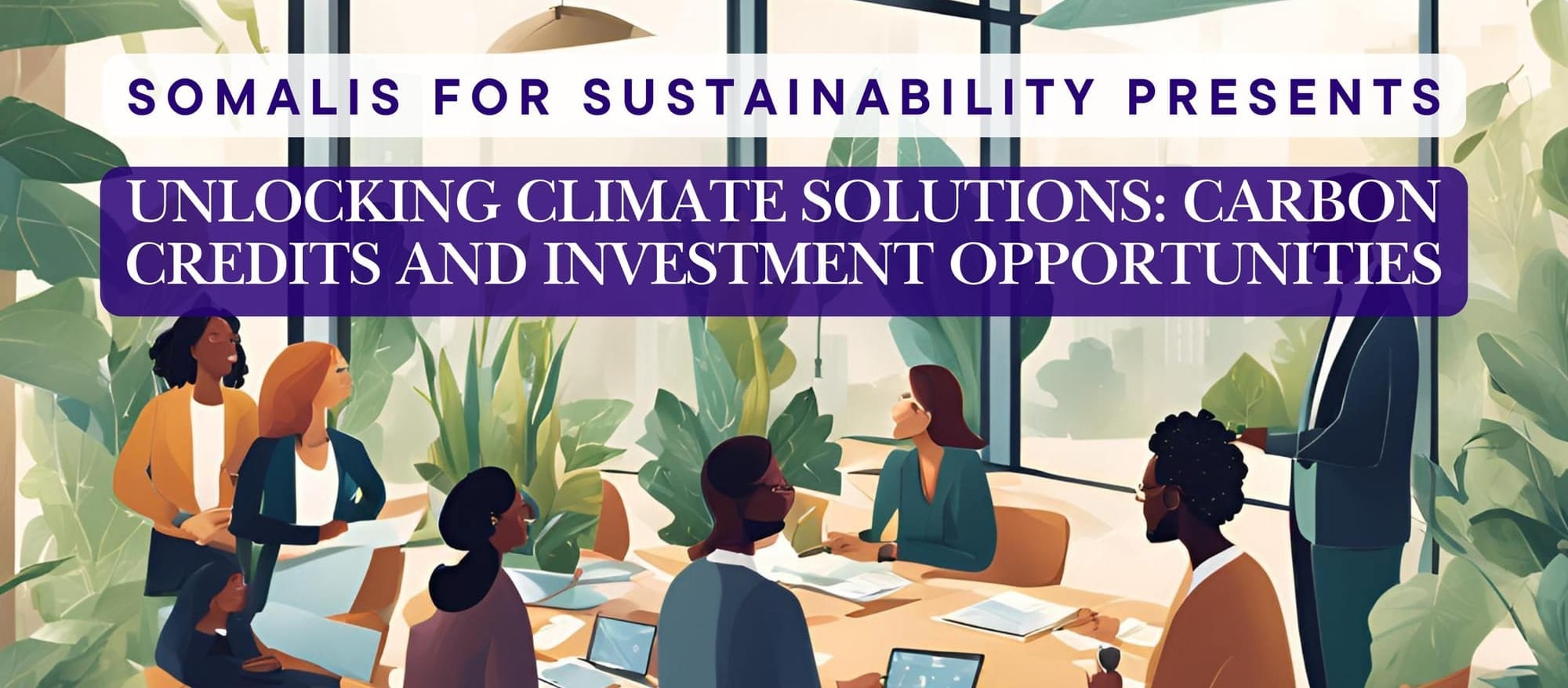
In late February, Somalis for Sustainability (S4S) hosted the second edition of our webinar series, “Unlocking Climate Solutions: Carbon Credits and Investment Opportunities”. This session was inspired by the outcomes of COP29, known as the "climate finance COP", and featured guest speaker Hugh Salway from the Gold Standard.
The webinar served as a beginner-friendly introduction to carbon credits and the broader landscape of climate finance. Hugh began by outlining three main carbon pricing mechanisms:
1. Carbon Tax - Used in countries like the UK, where companies are taxed based on their emissions.
2. Emissions Trading Systems (ETS) - Where governments cap emissions across sectors and allow companies to buy/sell emission allowances, each representing one tonne of CO₂.
3. Carbon Credits - Issued by organisations like Gold Standard, these represent one tonne of CO₂ that has already been reduced or removed from the atmosphere.
Hugh explained the three-step process of how carbon credits are generated:
- Baseline Scenario - The original high-emission activity (e.g. coal-fired electricity).
- Intervention - The project that replaces the activity (e.g. installing solar panels).
- Project Scenario - The new, low-emission alternative. The difference in emissions between the baseline and project scenario is what determines the number of credits issued.
A key concept discussed was Additionality – the idea that carbon finance should only support projects that wouldn’t happen without it. For example, if installing solar panels is already the cheaper option, carbon credits shouldn’t be used to fund it. However, in places where such projects face financial or infrastructural barriers, carbon finance can be essential.
The session also touched on the types of projects eligible for carbon credits, including reforestation, renewable energy, and sustainable agriculture. Hugh noted that renewable energy projects are receiving fewer credits nowadays due to the falling costs of clean technologies.
To wrap up, Hugh explored both the strengths and criticisms of carbon credits. On the positive side, they help put a price on emissions reductions and enable private sector investment, especially important as public climate funding declines. On the flip side, critics argue that credits don't always represent real reductions. That’s why Gold Standard and similar organisations implement strict methodologies to ensure accuracy and transparency.
Bringing the conversation closer to home, Hugh highlighted that only four Gold Standard projects currently exist in the Somali Horn, focused on energy efficiency and developed by the same organisation. In contrast, Kenya has nearly 200 projects, pointing to a major opportunity for growth in Somalia and the surrounding areas.
Couldn’t make it? The full webinar will be available soon on the S4S YouTube channel—stay tuned!
What is the latest in the Horn?
Reducing Flood Impact in Somalia: The Role of Early Warning Systems – by SEG Forum

SEG Forum is a community committed to fostering connection and entrepreneurship within the Somali diaspora and back home. We empower changemakers through global networks and innovative ideas, while creating sustainable impact across Somalia. At our core, we aim to reconnect Somalis to their roots through collaboration, opportunity, and purpose.
Flooding is a recurring and destructive challenge in Somalia, particularly in the riverine areas along the Juba and Shabelle rivers. The impact of seasonal floods on agriculture, communities, and infrastructure is devastating, and the absence of timely and reliable flood warnings only exacerbates the situation. With Somalia facing multiple climate-related shocks, ranging from floods to droughts, the need for an effective and operational early warning system (EWS) has never been more urgent.
An Early Warning System is designed to alert communities ahead of potential disasters like floods. By utilising weather data, river levels, and environmental patterns, it gives people the time to evacuate, protect their property, and implement safety measures before the disaster strikes.
The Current Flooding Situation in Somalia: Somalia’s vulnerability to flooding is directly tied to its dependence on the Juba and Shabelle rivers, which flood during the Gu and Deyr rainy seasons. These floods displace communities, destroy crops, and disrupt local economies. Currently, approximately 3.4 million people in Somalia are experiencing acute food insecurity, and many more are displaced due to the compounded effects of floods and other climate shocks. Vulnerable groups, such as IDPs (Internally Displaced Persons), nomads and those in rural areas, are extremely at risk. In fact, 64% of IDP sites in Somalia flood regularly, forcing repeated displacement and exacerbating the ongoing humanitarian crisis.
Despite the widespread and recurrent nature of flooding, Somalia lacks a comprehensive and efficient EWS that could help mitigate the impact of such disasters. Early warnings can reduce the scale of flooding by enabling timely evacuations, safeguarding infrastructure, and facilitating emergency response efforts.
Why Early Warning Systems Are Essential: An effective early warning system is crucial for several reasons:
- Timely Evacuations and Protection: With a reliable early warning system, communities can be informed in advance about incoming floods. This allows for timely evacuations and other protective measures that minimise loss of life and prevent the destruction of property. It can also help people prepare their livestock and relocate belongings before the floodwaters hit.
- Enhanced Emergency Response: Early warnings can facilitate a more coordinated response to flooding, enabling humanitarian organisations, local governments, and communities to act quickly. From deploying rescue teams to delivering emergency supplies, an early warning system makes response efforts more effective and reduces the strain on already overburdened communities.
- Agricultural Protection: Floods can devastate crops and ruin livelihoods. A timely warning allows farmers to harvest their crops early or take protective measures to safeguard their land. In some cases, communities can build temporary flood barriers or divert water away from vital agricultural zones to mitigate crop losses.
- Supporting Disaster Risk Reduction (DRR): Early warning systems are a foundational element of any disaster risk reduction strategy. They not only help mitigate the immediate impact of floods but also contribute to long-term resilience by providing communities with the tools to prepare for and respond to future disasters.
- Informed Decision-Making: Reliable data from early warning systems enables governments, humanitarian organisations, and local leaders to make informed decisions. This could range from allocating resources to directing relief efforts to specific flood-prone areas. It can also guide infrastructure investments to better protect vulnerable areas.
Current Gaps in Somalia’s Early Warning Systems: Despite the clear need for early warning systems, Somalia’s current infrastructure is insufficient and underdeveloped.
- Lack of Reliable Data: Somalia’s meteorological stations, which are vital for collecting data on rainfall, river levels, and weather patterns, have faced significant setbacks due to years of conflict and neglect. Although some stations have been restored, they still face operational challenges and delays in data collection. This lack of timely and accurate data makes it difficult to predict floods and issue early warnings.
- Fragmented Systems: Existing early warning systems in Somalia tend to be generalised and not tailored to the unique needs of the country. The systems often fail to address specific flood risks along the Juba and Shabelle rivers or to incorporate the diverse needs of rural and urban populations. As a result, the messages sent out by these systems are often unclear and ineffective.
- Limited Accessibility: Many early warning systems in Somalia do not reach all affected populations. Vulnerable groups, such as nomadic communities or those in remote rural areas, may not have access to the technology or communication channels needed to receive early warnings. This highlights the need for a mobile-based or low-tech solution that can reach a wider audience, particularly in areas with limited infrastructure.
Building an Effective Early Warning System in Somalia: An ideal early warning system for Somalia would be multifaceted, scalable, and accessible to all populations. Here are some of the practical and plausible steps to develop such a system:
- Mobile-Based Alerts: Given the widespread use of mobile phones in Somalia, a mobile-based alert system could be a highly effective means of reaching large segments of the population. The DIGNIIN Alert System, which was designed to send flood warnings along the Juba and Shabelle rivers, offers an example of such a system. However, it has faced significant challenges. The system has failed to reach 100% of the targeted agro-pastoralist communities due to connectivity issues and a lack of widespread access in certain remote areas. Additionally, the user interface of the system has been criticised for being confusing, which further hinders its effectiveness. While the DIGNIIN system is a step in the right direction, it highlights the challenges of implementing technology-based solutions in a context where infrastructure, user experience, and accessibility must be carefully considered. To make such systems more successful, it is crucial to improve their design and ensure that they are accessible to all populations, particularly those in remote areas.
- Upgrading Weather Stations: Investing in the restoration and modernisation of Somalia’s meteorological stations is critical. These stations need to be equipped with advanced sensors and automated systems to transmit data in real-time. This will provide the data necessary for accurate flood forecasting and early warning. Additionally, there needs to be a concerted effort to maintain and operationalise these stations to prevent future breakdowns.
- Community-Based Warning Systems: Involving local communities in the development and operation of early warning systems is crucial. Local knowledge about flood risks can complement scientific data and help improve flood forecasting accuracy. Community-based early warning systems can be especially effective in rural and nomadic areas, where people rely on traditional communication methods. Training local leaders to share information through community networks and social media can help ensure that flood warnings reach all members of the community.
- Regional Collaboration: Collaboration with international organisations, regional neighbours, and technical partners can bolster Somalia’s early warning capabilities. Data sharing agreements with neighbouring countries, such as Ethiopia, can ensure that flood response efforts.
The SEG forum has also developed Tableau dashboards on Juba and Shabelle river breakages, which you can access for 2022 and 2021.
The views and opinions expressed in this contribution are those of the author and do not necessarily reflect the official policy or position of our organisation.
Word of the Month: Qashin (Qaa-shin) Waste
Waste management in Somalia presents a pressing challenge, with limited infrastructure, weak regulation, and low public awareness contributing to widespread environmental and health risks. However, these challenges also open the door to impactful, sustainable solutions. The International Organisation for Migration (IOM) has launched the initiative "Keeping the Environment Clean, Turning Waste to Wealth", which empowers displaced communities by providing training in plastic recycling, solar energy, and sustainable waste management.
A key example of local innovation can be seen at the Envirogreen recycling plant in Mogadishu, where plastic waste is being transformed into durable roofing tiles—an effort that not only reduces environmental pollution but also addresses housing needs. Such initiatives are essential for Somalia’s transition towards a circular economy and a more sustainable, climate-conscious future.
Upcoming events/News:
🌍 Climate Change in the Somali Horn: Leveraging Knowledge Amidst Water Scarcity at UCL
📅 Date and Time: Wednesday, May 7 · 6 - 7:30 pm
📍 Location: University College London
🔗 Registration link: Sign up here
Join UCL and Kayd Somali Arts and Culture for a vital conversation on climate change and water scarcity in the Somali Horn 🌾💧. Hear from regional policymakers as they share first-hand insights and indigenous strategies for resilience.
This event brings together academics, policymakers, and community voices to explore climate resilience, urbanisation, and the value of local knowledge. 🤝 Organised with the support of a dedicated working group that included S4S
🔗 Don’t miss it! Be part of the dialogue shaping climate futures in the Horn of Africa.
Somalis for Sustainability & Octopus Energy Equality Foundation Event
📅 Date and Time: Thursday, 22nd May · 6:30-9pm
📍 Location: Octopus Energy HQ office
🔗 Registration link: To be shared soon!
Join us next month for an exciting collaboration between S4S and the Octopus Energy Equality Foundation, focused on careers in the renewable energy sector ⚡🌱. Stay tuned as more details will be shared on our socials very soon, so keep your eyes peeled! 👀
